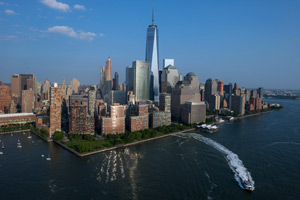N.Y., N.J. Ask US to Pay Half of $20 Billion Rail Tunnel

The two chief executives sent a letter to President Obama in mid-September asking for the commitment “to break the logjam” over financing of the project. The states and the Port Authority of New York and New Jersey would finance the other 50%, they said.
The existing tunnel is the only one under the river.
There have been comments from some area legislators who would like to build a freight rail tunnel, but there has been no formal project that has been funded. Instead, all freight in the New York-New Jersey area crosses the river through road tunnels or bridges.
“Building regional infrastructure to accommodate population growth and continued economic expansion is critical not only to our two states’ future, but also to the future economic strength of the nation,” the governors wrote.
The letter represents a gesture of cooperation between the governors. Last month, Christie and U.S. Sen. Cory Booker (D-N.J.) met with Transportation Secretary Anthony Foxx about the issue while Cuomo remained absent, insisting that the federal government first agree to help finance the project with cash grants, not just low-cost loans.
“The Gateway Tunnel is a critical infrastructure project for the states of New Jersey and New York, and more broadly for the entire region,” Assistant White House Press Secretary Frank Benenati said.
The Hudson River crossing is the linchpin of Amtrak’s 457-mile Northeast Corridor route, which serves 750,000 passengers a day through eight states and the District of Columbia.
The two existing 100-year-old tubes are at capacity. Damaged by flooding during Hurricane Sandy in 2012, they have less than 20 years of service left, Amtrak CEO Joseph Boardman said last year.
The region already faces the challenge of financing a $4 billion terminal for renovations to LaGuardia Airport, a $4 billion replacement for the Tappan Zee Bridge north of Manhattan and a new Bayonne Bridge between Staten Island and New Jersey that will allow larger vessels to pass, the governors wrote.
“The $20 billion scale of the Hudson rail tunnel project dwarfs all these state infrastructure endeavors combined,” the governors said.
Foxx welcomed the governors’ letter as a “big step forward.” He said in a statement he would “work towards the goal of an equitable split between the states and the federal government using our existing grant and financing programs and whatever can be provided by Congress.”
Kathryn Wylde, president of the Partnership for New York City, a civic group consisting of corporate CEOs, said she expected private sources of capital also to contribute to the project, with deals similar to those in place to help finance the Tappan Zee and Goethals bridges, and the modernization of LaGuardia.
Christie, a Republican running for president, in 2010 canceled a $12.4 billion tunnel project known as ARC, or Access to the Region’s Core, citing design issues and potential cost overruns. The biggest planned U.S. infrastructure project at the time, ARC would have doubled peak rail service to Manhattan.
The cancellation of ARC allowed Christie to redirect $1.25 billion to plug transportation budget holes and pay for road and bridge projects. It also enabled him to avoid raising the gasoline tax, among the nation’s lowest, before his presidential bid.

